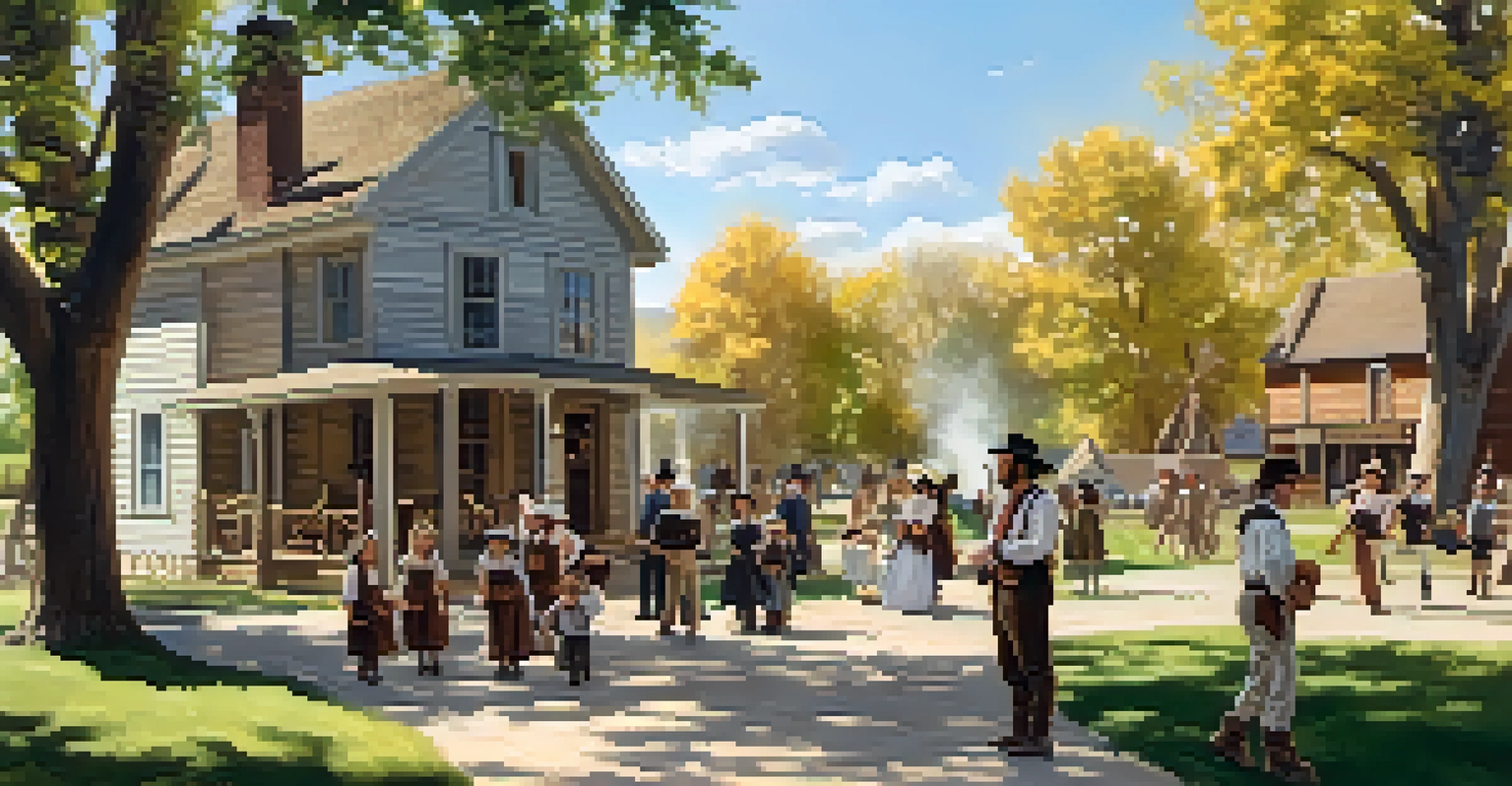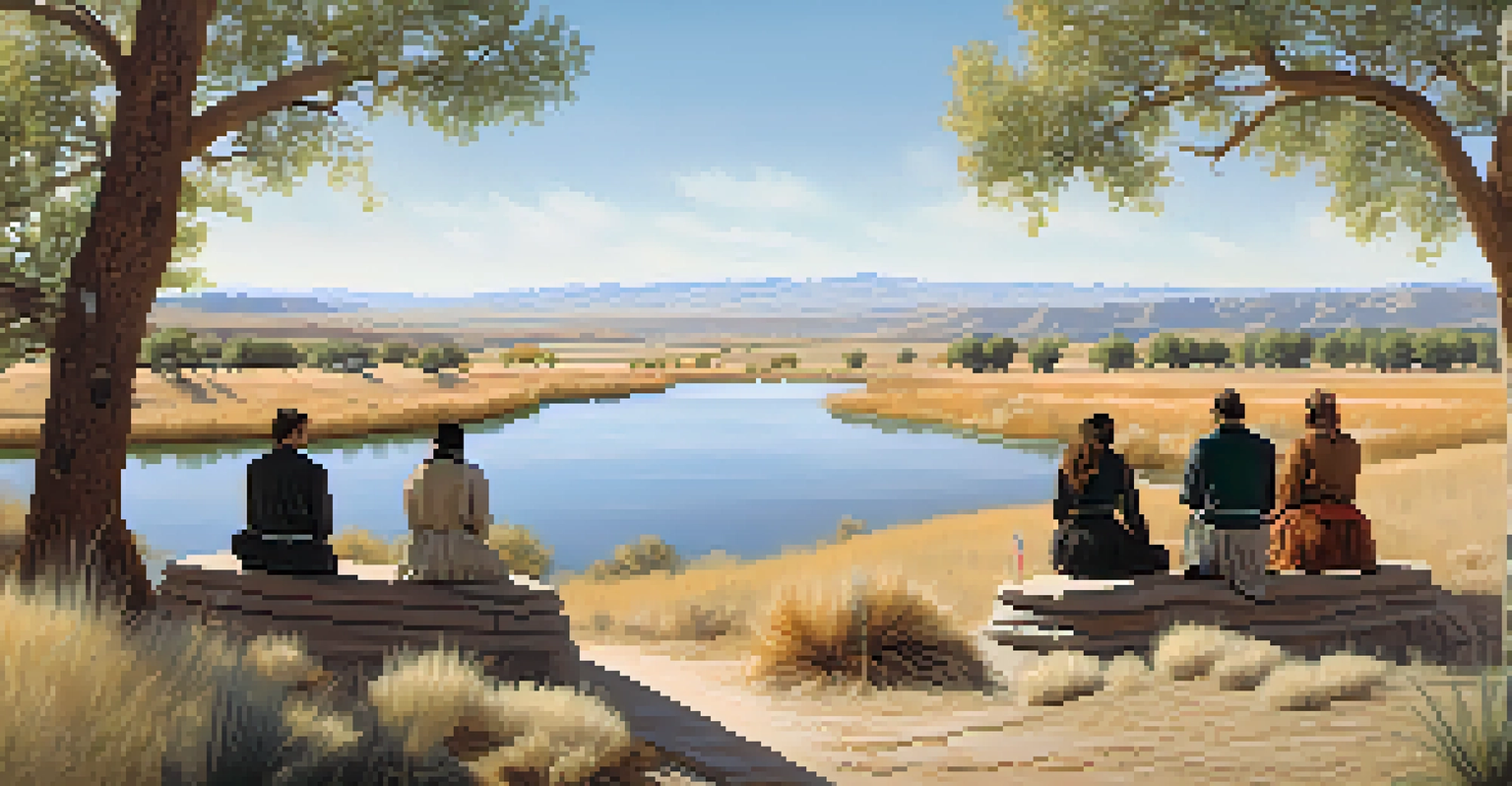Preserving Cultural Heritage: Efforts in Utah Today

Understanding Cultural Heritage and Its Importance
Cultural heritage encompasses the traditions, customs, and artifacts that define a community. It serves as a bridge connecting past generations to the present, shaping our identities and values. In Utah, this heritage is particularly rich, influenced by Native American history, pioneer settlements, and diverse immigrant cultures.
Preservation of one's own culture does not require contempt or disrespect for other cultures.
Preserving this heritage is vital not just for historical reasons, but also for fostering community pride and continuity. When we cherish our cultural roots, we create a more cohesive society that values diversity and inclusivity. This appreciation can inspire future generations to engage with and uphold their own cultural narratives.
The efforts to preserve Utah's cultural heritage are varied, involving local communities, government agencies, and non-profit organizations. Each group plays a crucial role in ensuring that the stories of Utah’s past are not lost but celebrated and passed on.
Key Organizations Leading Preservation Efforts
Several organizations in Utah are at the forefront of cultural preservation. One notable example is the Utah Division of State History, which works tirelessly to document and protect the state's historical sites and artifacts. Their initiatives include conducting research, offering grants, and providing educational resources to the public.

Additionally, the Utah Heritage Foundation focuses on preserving historic buildings and landscapes, promoting the importance of architectural history. Their commitment to advocacy helps ensure that significant structures remain part of the community's fabric, allowing residents and visitors alike to appreciate the state's architectural diversity.
Cultural Heritage Shapes Identity
Cultural heritage connects past generations to the present, shaping our identities and fostering community pride.
Community organizations, such as the Native American Heritage Commission, also play a vital role. They work to protect sacred sites and promote awareness about the cultural significance of these locations, ensuring that Indigenous voices are heard in the preservation dialogue.
Community Engagement in Cultural Preservation
Community engagement is essential for successful preservation efforts in Utah. Local residents often serve as the backbone of initiatives, providing invaluable knowledge about their cultural traditions and histories. By involving community members, organizations can create more meaningful and impactful preservation strategies.
Cultural heritage is the foundation of our identity and a source of pride for our communities.
Workshops, events, and festivals are excellent ways to foster community involvement. For instance, the annual Utah Arts Festival showcases the state's diverse artistic expressions, highlighting the importance of various cultural traditions. These events not only celebrate heritage but also encourage collaboration among different cultural groups.
Moreover, educational programs in schools promote awareness about local history and cultural diversity. By integrating these topics into curricula, younger generations are empowered to appreciate and uphold their cultural heritage, ensuring its survival for years to come.
Challenges Facing Cultural Heritage Preservation
Despite the best efforts, preserving cultural heritage in Utah comes with its challenges. Rapid urbanization and economic development often threaten historical sites and traditions. Communities may find themselves torn between progress and preservation, as new developments can overshadow the importance of maintaining cultural landmarks.
Funding is another significant hurdle. Many preservation initiatives rely on grants and donations, which can be inconsistent. Without stable financial support, it can be difficult to maintain ongoing projects or to preserve sites that require immediate attention.
Organizations Drive Preservation Efforts
Various organizations in Utah, like the Utah Division of State History, play crucial roles in documenting and protecting cultural heritage.
Additionally, there is the challenge of keeping cultural practices alive amid changing demographics. As communities evolve, some traditions may fade away or become diluted, making it crucial to actively engage with younger generations to ensure these practices are passed down.
Spotlight on Historic Sites in Utah
Utah is home to numerous historic sites that embody its rich cultural heritage. Places like the Golden Spike National Historical Park commemorate the completion of the First Transcontinental Railroad, a pivotal moment in American history. This site not only attracts tourists but also serves as a reminder of the diverse communities that contributed to this achievement.
Another notable site is the Pioneer Village in Provo, which showcases the lives of early settlers. The village features original buildings and artifacts that tell the story of Utah's pioneer heritage, allowing visitors to step back in time.
Additionally, cultural sites such as the Bear River Massacre site highlight the importance of remembering and honoring the narratives of Indigenous peoples. These locations serve as powerful reminders of the complexities of Utah's history and the ongoing journey toward reconciliation and understanding.
Educational Programs Promoting Cultural Heritage
Educational programs play a crucial role in preserving cultural heritage by fostering understanding and appreciation among the public. In Utah, initiatives like the Utah History Fair encourage students to explore their local history and cultural narratives through research and presentations. This hands-on approach allows young people to connect with their heritage in a meaningful way.
Museums and cultural centers across the state also offer workshops and educational resources. For example, the Natural History Museum of Utah not only showcases the state's natural history but also emphasizes the cultural significance of its Indigenous peoples, providing a holistic view of Utah's past.
Community Involvement is Essential
Engaging local communities through events and educational programs is vital for the successful preservation of cultural heritage.
Furthermore, partnerships between schools and local heritage organizations can enhance educational opportunities. By collaborating on projects, students gain access to expert knowledge and resources, enriching their understanding of cultural preservation and its significance.
Looking Ahead: The Future of Cultural Heritage in Utah
As we move forward, the future of cultural heritage preservation in Utah hinges on collaboration and innovation. By uniting various stakeholders, including government, non-profits, and community members, a more cohesive strategy can be developed. This collaborative approach can ensure that preservation efforts are not only effective but also inclusive.
Technology also presents new opportunities for preservation. Digital archiving and virtual reality experiences can make cultural heritage more accessible to a wider audience. By leveraging these tools, organizations can engage younger generations and encourage them to explore and appreciate their cultural backgrounds.

Ultimately, the journey of preserving cultural heritage in Utah is ongoing. By remaining committed to these efforts and embracing new ideas, we can ensure that the rich tapestry of Utah's history continues to thrive for generations to come.